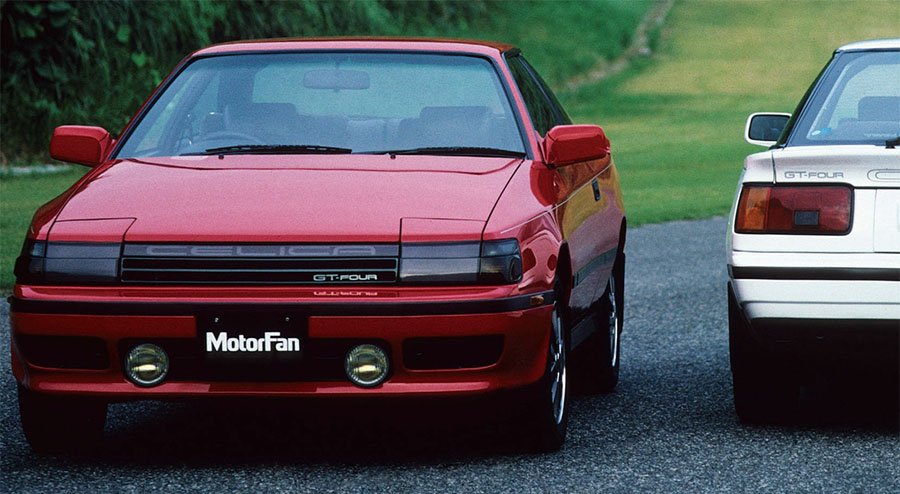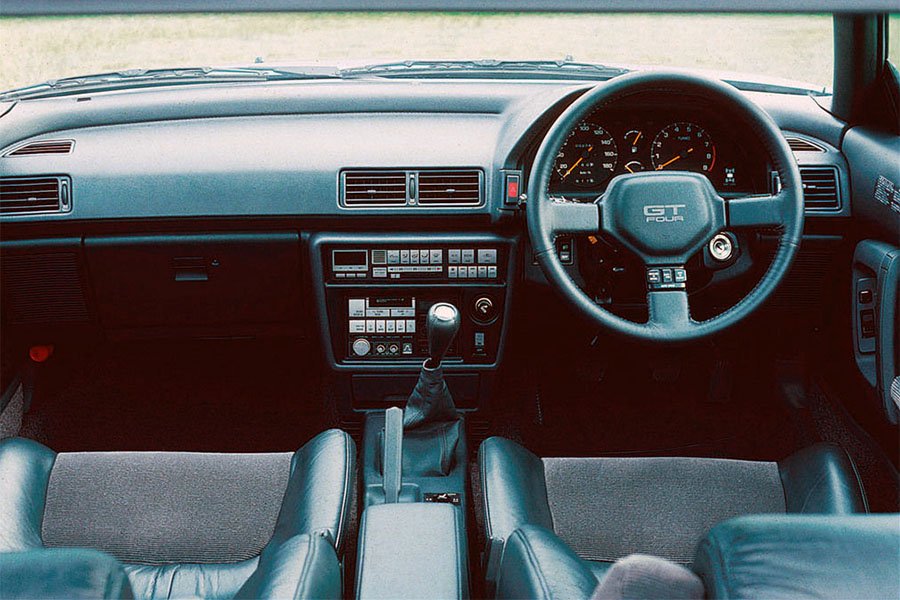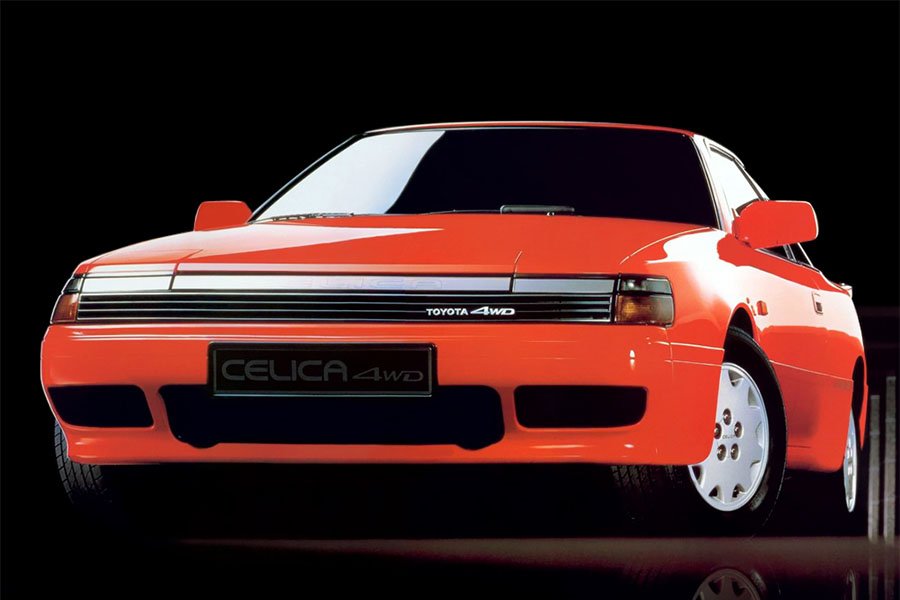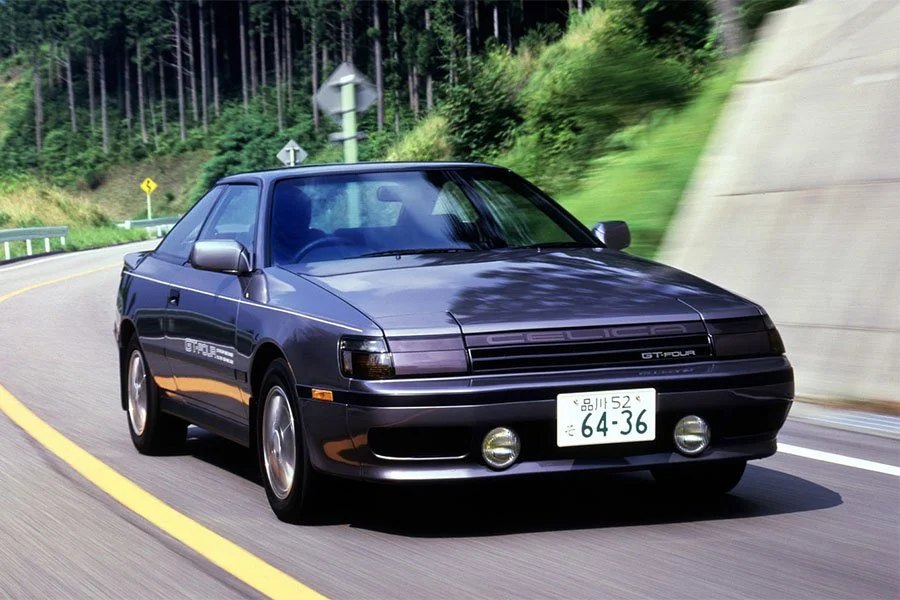Guide: Toyota Celica ST165 GT-Four - a Historical & Technical Appraisal
/BACKGROUND
Although the gen. three Celica TCT was fairly conventional by the super specialised nature of most Group B creations, its toughness and reliability helped Toyota to half-a-dozen WRC wins on the gruelling Safari and Ivory Coast rallies between 1983 and 1986.
However, not content to play second fiddle to the likes of Peugeot, Lancia and Audi, Toyota were secretly developing their own purpose-built platform in anticipation of the new Group S regulations set to come into effect from 1987.
Even more extreme than Group B, Group S required a production run of just ten cars and was effectively a prototype class for rallying: Group B on steroids.
With Group S in mind, Toyota set about developing the radical 222D which outwardly resembled the mid-engined MR2 that had been introduced back in June 1984.
Unfortunately, when the FIA announced in May 1986 that Group B cars would be banned at the end of the season (owing to a series driver and spectator fatalities), Group S was quickly killed off too and the 222D never saw competitive action.
Instead, from 1987 Group A would take over as the premier rally category.
Unlike Group B with its 200-car production requirement, to qualify for Group A a manufacturer had to produce a whopping 5000 examples of their desired model.
As it transpired, the ‘87 season was dominated by Lancia’s Delta HF 4WD. The all-wheel drive Delta had not been conceived with competition in mind, rather, circumstances conspired it was simply the best Group A package around at such short notice.
Meanwhile over in Japan, Toyota had not been deterred from mounting a serious World Rally Championship attack, but unlike Lancia the Japanese firm did not have a suitable platform waiting in th wings.
What they did have in the pipeline though was a four-wheel drive version of the fourth generation Celica, a Convertible prototype of which had been displayed at the Tokyo Motor Show in October 1985.
At that stage, no thought had been given to producing a competition version of the all-wheel drive Celica, but things immediately changed when the FIA dropped their Group B / Group S bombshell in mid ‘86.
Accordingly, Toyota went into overdrive to have a four-wheel drive Celica in showrooms by the end of 1986 with a view to challenging Lancia for the 1988 season.
The resultant Celica GT-Four (internal model code ST165) was presented at the Tokyo Motor Show in October 1986 and production got underway that same month for the 1987 model year.
Based on the critically acclaimed front-wheel drive normally aspirated ST162 Celica GT, the GT-Four most notably featured permanent four-wheel drive, a turbocharged engine, ABS brakes and a few minor cosmetic tweaks.
Initially produced for the Japanese Domestic Market, assembly took place at Toyota’s Tahara plant in Aichi Prefecture.
An export version arrived for the 1988 model year (the second year of production).
Group A homologation was ultimately approved on May 1st 1988.
CHASSIS
The GT-Four was based on a customised version of the fourth generation Celica’s T160 steel monocoque bodyshell. Its floorpan was strengthened to increase rigidity and further modifications were carried out in order to accommodate the new front-to-rear propshaft.
The wheelbase measured an identical 2525mm to the rest of the Celica range.
Suspension-wise the GT-Four retained the same basic MacPherson strut suspension layout as the GT but the back end was modified to incorporate trailing arms, lateral links and uprated coil springs. Coil-sprung gas-filled dampers were fitted all round along with thicker anti-roll bars at either end.
Brakes were vented 255mm discs with twin-piston calipers up front and solid 269mm discs with single-piston calipers at the rear. ABS was fitted as standard along with larger diameter pads than on the GT.
6 x 14-inch alloy wheels shod with 205/60 VR 14 tyres were imported direct from the GT.
Power steering was another standard feature.
A 60-litre fuel tank was mounted under the rear seat.
ENGINE / TRANSMISSION
Under the GT-Four’s hood was a turbocharged version of the GT’s transversely-mounted inline four cylinder atmo engine.
Dubbed Type 3S-GTE, it utilised a reinforced cast-iron block and crankshaft along with a revised lubrication system that sprayed a cooling jet of oil to the underside of the pistons.
The light-alloy DOHC 16 valve head was developed by Yamaha and imported without further modification. It featured pent-roof combustion chambers, central spark plugs and a cross-flow intake.
Similarly, displacement was the same 1998cc as the normally aspirated engine with an 86mm bore and stroke.
Nippon Denso fuel-injection (an L-Jetronic system produced under licence from Bosch) featured direct injection to each inlet port.
The GT-Four’s water-air intercooler and in-house-developed CT26 turbo was a two-litre adaption of the three-litre version used in the forced induction Supra around at the time. Boost pressure ran at a maximum of 0.7 bar.
New digital engine management used a sophisticated knock sensor linked to a high speed central processing unit.
Compression was dropped from 9.8:1 to 8.5:1.
Peak output was 185bhp at 6000rpm and 177lb-ft at 4000rpm.
This represented useful gain over the normally aspirated GT motor which produced 148bhp at 6400rpm and 133lb-ft at 4800rpm.
The GT-Four’s catalysed 3S-GTE engine was among the first designed to run exclusively on unleaded fuel.
Transmission was through an E50F five-speed manual gearbox, single dry-plate clutch and full-time four-wheel drive system with 50:50 torque split and traditional manually lockable centre differential. The rear differential was located on a subframe under the modified floorpan. No automatic gearbox option was ever offered.
BODYWORK
Although the four-wheel drive Celica debuted in open top form at Tokyo in late 1985, Toyota only ever offered the GT-Four in ‘liftback’ Coupe trim.
Aside from large GT-Four decals on each door and GT-Four badges at either end, this latest variant could be distinguished on account of its revised front apron that featured a body coloured chin spoiler, a trio of enlarged intakes and a pair of circular fog lights.
The original car’s 0.31 drag coefficient was unaffected.
Body panels were fashioned from steel with the exception of the bumpers, front grille assembly, exterior mirror housings and rear spoiler, all of which were polyurethane.
Initially only five colours were offered: White, Black, Grey Metallic, Dark Blue Metallic or Red.
INTERIOR
Inside, all the dials were located in a curved binnacle directly behind the three-spoke leather-rimmed GT-Four-branded steering wheel.
Instrumentation comprised a large 180 kmh speedometer and matching 9000rpm rev counter with boost light. In between were smaller read outs for fuel and water temperature. Off to the left was an oil temperature gauge and to the right was a visual display for the differential lock.
The differential lock switch itself was located adjacent to the handbrake.
Controls for the four-speaker audio system and analogue air-conditioning system were housed on the central control panel along with a digital clock.
Heavily bolstered electric sports seats were trimmed in leather with velour centres. Matching velour inserts were also fitted to the door panels. The gear knob and gaiter were trimmed in leather.
In addition to the aforementioned list of standard equipment, the GT-Four also came with central locking, electric windows and electric mirrors.
OPTIONS
With such a high standard specification, the list of optional extras was fairly limited. It included a sunroof, trunk liner, tow bar, fire extinguisher and roof rack.
WEIGHT / PERFORMANCE
Compared to the ST162 2.0 GT the GT-Four weighed in 100kg heavier (at 1350kg) on account of its reinforced bodyshell and all-wheel drive system.
Nevertheless, top speed went from 130mph to 137mph and the 0-62mph time dropped from 8.2 to 7.7 seconds.
1988 MODEL YEAR PRODUCTION CHANGES
For the 1988 model year (production of which began in October 1987), Toyota made several revisions to the GT-Four and also made it available on the international market. In the USA it became known as the Celica All-Trac Turbo while in most other markets it was dubbed the Celica Turbo 4WD. Badging varied from market to market.
Most of the updates were in line with the rest of the Celica range to include a re-styled front apron and grille, new tail lights, new wheels, revised instrumentation, a tidier centre console with modernised switchgear and ventilation controls, a new audio system and a re-styled three-spoke steering wheel.
The optional sunroof now came with a larger opening and a wider choice of exterior colours was offered as well.
Specific to the GT-Four was a viscous-coupling limited-slip type differential instead of the original manually lockable type along with a supplementary oil cooler. An ammeter replaced the original diff lock dash display.
IMSA GTO CHAMPION EDITION
To celebrate the Celica winning 1987’s IMSA GTO Championship, Toyota supplied a batch of 75 special edition GT-Fours to the US market dubbed the All-Trac Turbo GTO Champion Edition.
Produced in late 1987 on the 1988 model year platform, each car was configured in white with matching white wheels, a white front grille stripe, IMSA GTO Champion script along the side mouldings and blue upholstery.
END OF PRODUCTION
ST165 production ran from October 1986 to August 1989, during which time Toyota completed circa 26,500 examples.
The fifth generation ST185 GT-Four was subsequently produced from September 1989.
COMPETITION HISTORY
Group A Celica GT-Fours prepared by Toyota Team Europe in Germany went on to have a very successful career in the World Rally Championship.
The ST165 made its competition debut at round five of the 1988 WRC, the Tour de Corse, just two days after the FIA had granted homologation. Kenneth Eriksson / Peter Diekmann came home fifth on that occasion while team-mates Juha Kankkunen / Juha Piironen retired.
The GT-Four would not better that result until the final event of 1989 when Bjorn Waldegaard and Fred Gallagher finished third on the RAC Rally in November.
TTE went on to record their first victory with the ST165 at Rally Australia in September 1989 thanks to Kankkunen / Piironen. Although it was the team’s only win that year, podium finishes at five other events saw Toyota finish second in the Manufacturer standings on 101 points to Lancia’s 140 while Kankkunen claimed third spot in the Drivers’ Championship with 60 points behind Lancia drivers Alex Fiorio (65) and Miki Biasion (106).
The ST165’s second full season culminated in Toyota’s Carlos Sainz winning the 1990 Drivers’ title following victories on the Acropolis, New Zealand, 1000 Lakes and RAC rallies alongside navigator Luis Moya. The Spaniard finished the season on 140 points ahead of Lancia’s Didier Auriol (95) and Juha Kankkunen (85).
Bjorn Waldegaard / Fred Gallagher took TTE’s win tally to five events for the year with their victory on the Safari Rally, but it was not enough for Toyota to dislodge Lancia from the Manufacturers’ league; the Japanese firm finished just six points behind their Italian rival with 131 points to 137.
Despite five wins for Sainz / Moya in 1991 (Monte Carlo, Portugal, Tour de Corse, Argentina and Catalunya), a strong second half of the season for Lancia’s Juha Kankkunen saw both the Driver and Manufacturer titles fall Lancia’s way. Sainz was second in the Driver’s competition (143 points compared to Kankkunen’s 150) and Toyota were seven points adrift of Lancia in the Manufacturers’ contest.
Although the ST165 was replaced with the new ST185 for 1992, the original GT-Four recorded the last of its 13 WRC victories when Mats Jonsson and Lars Backman took a surprise win on that year’s Swedish Rally for Toyota Team Sweden.
Text copyright: Supercar Nostalgia
Photo copyright: Toyota - https://global.toyota/







































